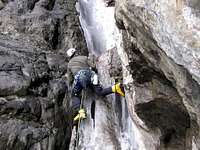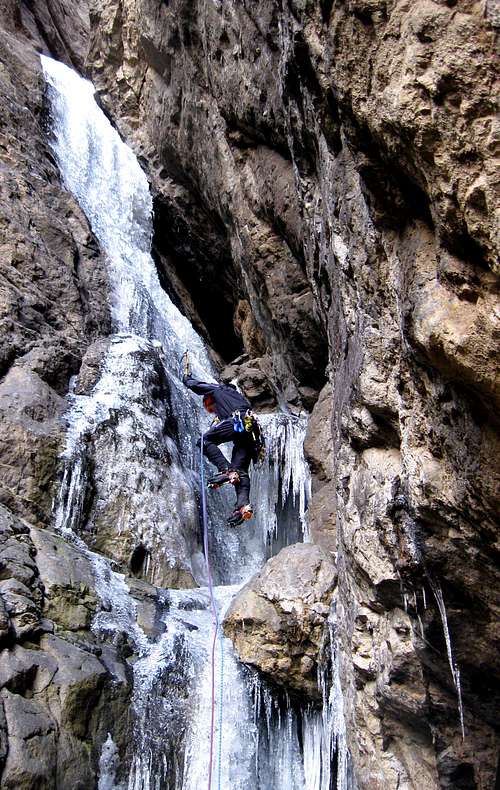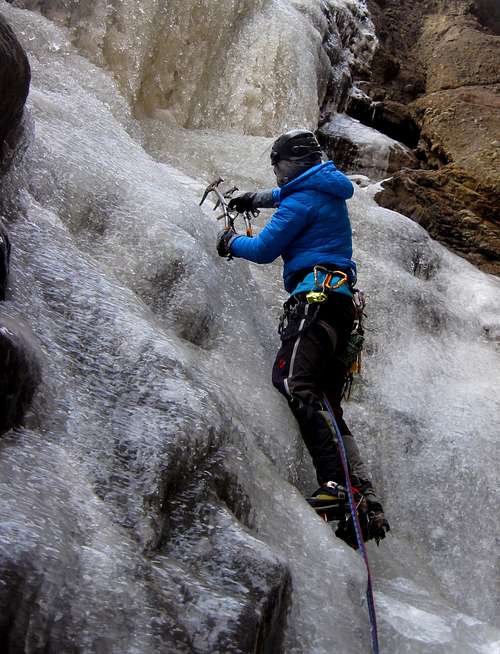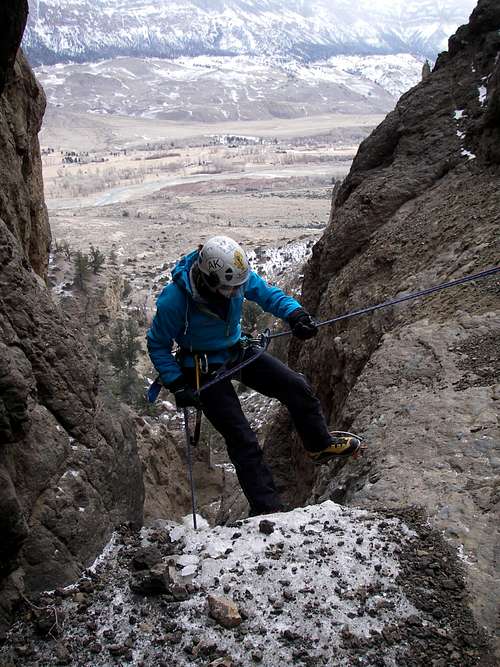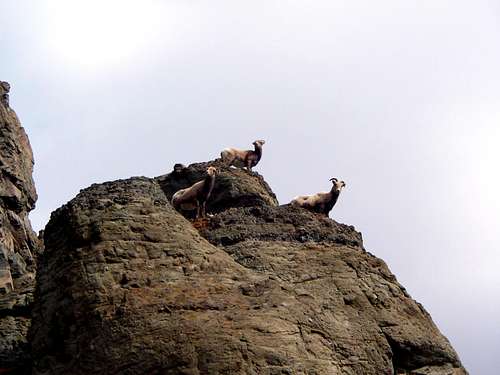-
 6989 Hits
6989 Hits
-
 80.49% Score
80.49% Score
-
 12 Votes
12 Votes
|
|
Route |
|---|---|
|
|
Ice Climbing |
|
|
Winter |
|
|
Most of a day |
|
|
WI 3 |
|
|
3 |
|
|
Overview
Stringer is one of the most interesting moderate ice-climbs in the South Fork. It comes in most years but is easily overlooked because it's hidden in a deep dark chimney. The first ascent was done in 1990 by Stan Price and Jim Krudener.Getting There
From Cody, take the South Fork Highway and follow it until it turns to gravel (about an hour from town).
After the road turns to gravel, the first major route you'll see on the right is Schoolhouse. Continue past that for about a mile, watching for the Stringer chimney on the right. Quite often you'll see the slabby 2nd pitch before the first. It usually looks like an uninteresting sun-baked slab.
From the road, the first pitch looks like a thin scary smear. That's because it often is.
Park by the speed limit sign just before Legg Creek and start hiking toward the chimney. The Stringer drainage often has ice in it all the way to the road, which makes for fast easy cramponing. There will usually be a couple of minor bulges to climb and then some mixed scrambling to get to the base of the first pitch.
Route Description: First Pitch
The first pitch of Stringer is always interesting and varies tremendously from year to year. Sometimes it starts with dry-tooling, sometimes the leader knocks off most of the thin ice, leaving the second with only rock to climb. Make sure your mixed climbing abilities are adequate. You'll get some practice on the approach. Sometimes you have to climb a dead tree just to get there.If you're lucky, the first pitch will be fat WI 3 with tons of mushrooms to stand on, though it's seldom very juicy. Some years the sticks are pretty good, other years you're hacking through weird dry layers of chandeliers. Occasionally, the top-out will make you cry (see picture below).
Regardless of the ice condition, you have to climb a fun tight chimney for about 50 meters to a decent bolt anchor. On warm windy days, be very concerned about rockfall.
Many people climb only the first pitch of Stringer and then head back down.
Route Description: Second and Third Pitches
After climbing the first pitch, continue up the drainage until you find the start of some long rolling slabs. This second pitch also has a bolt anchor.After the second pitch, just keep going and eventually find another long fat slab with a steep section at the top.
Essential Gear
Typical ice-climbing gear. V-threads usually aren't needed on this route but you never know when the bolts will disappear.
In this picture, you can see how the top-out to the first pitch is sometimes very exciting for the leader. You might find yourself clawing at this gravel, having run completely out of ice.
Be aware that most cell phones don't work well or at all in the South Fork, especially once you get into a drainage. If you don't have a Spot beacon (and even if you do), make sure someone knows where you're going and when you're supposed to be back. If you don't return, they should call the Park County Sheriff's Office at (307) 527-8700. It could take several hours for the SAR team to reach you: make sure you have a way to stay warm.



